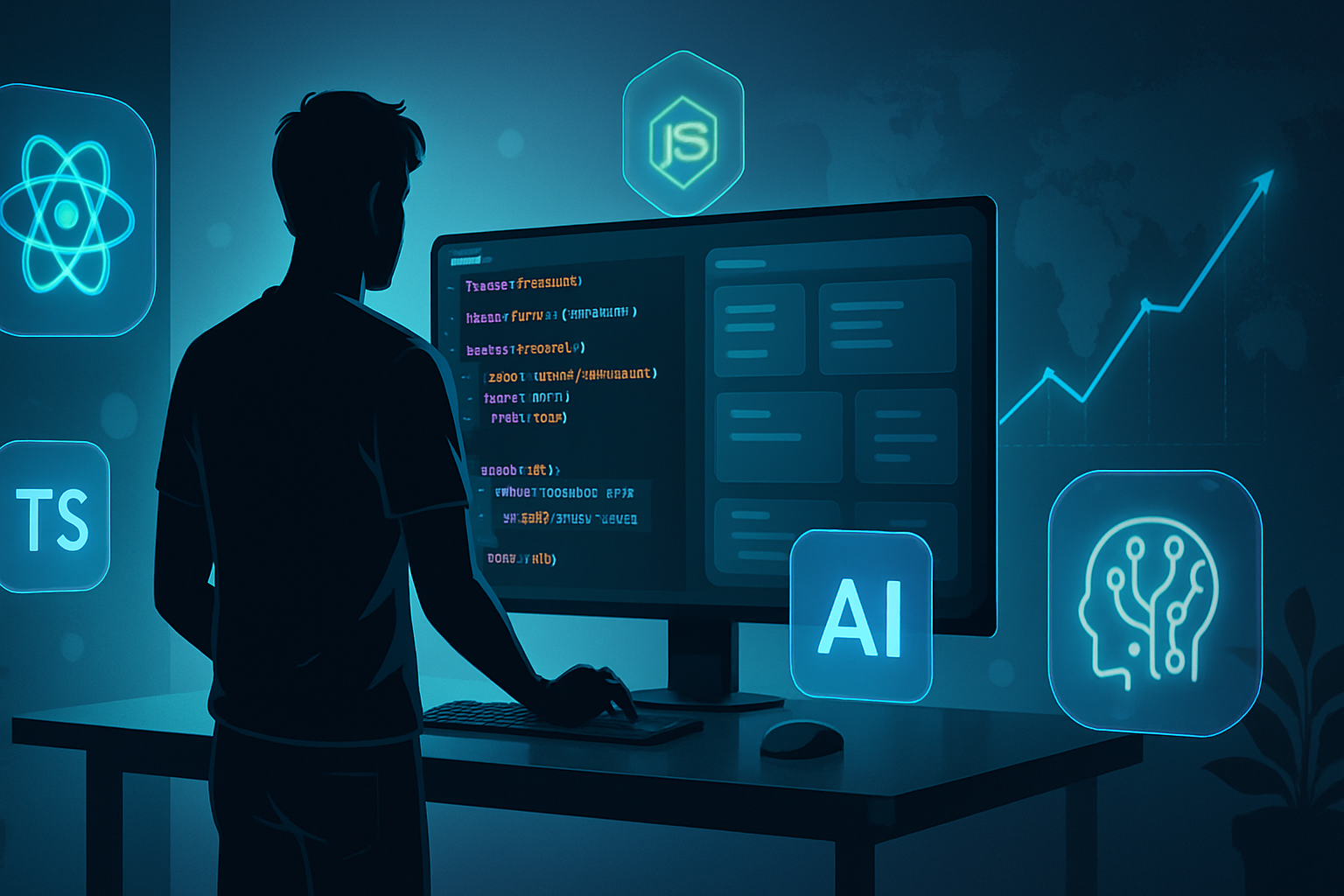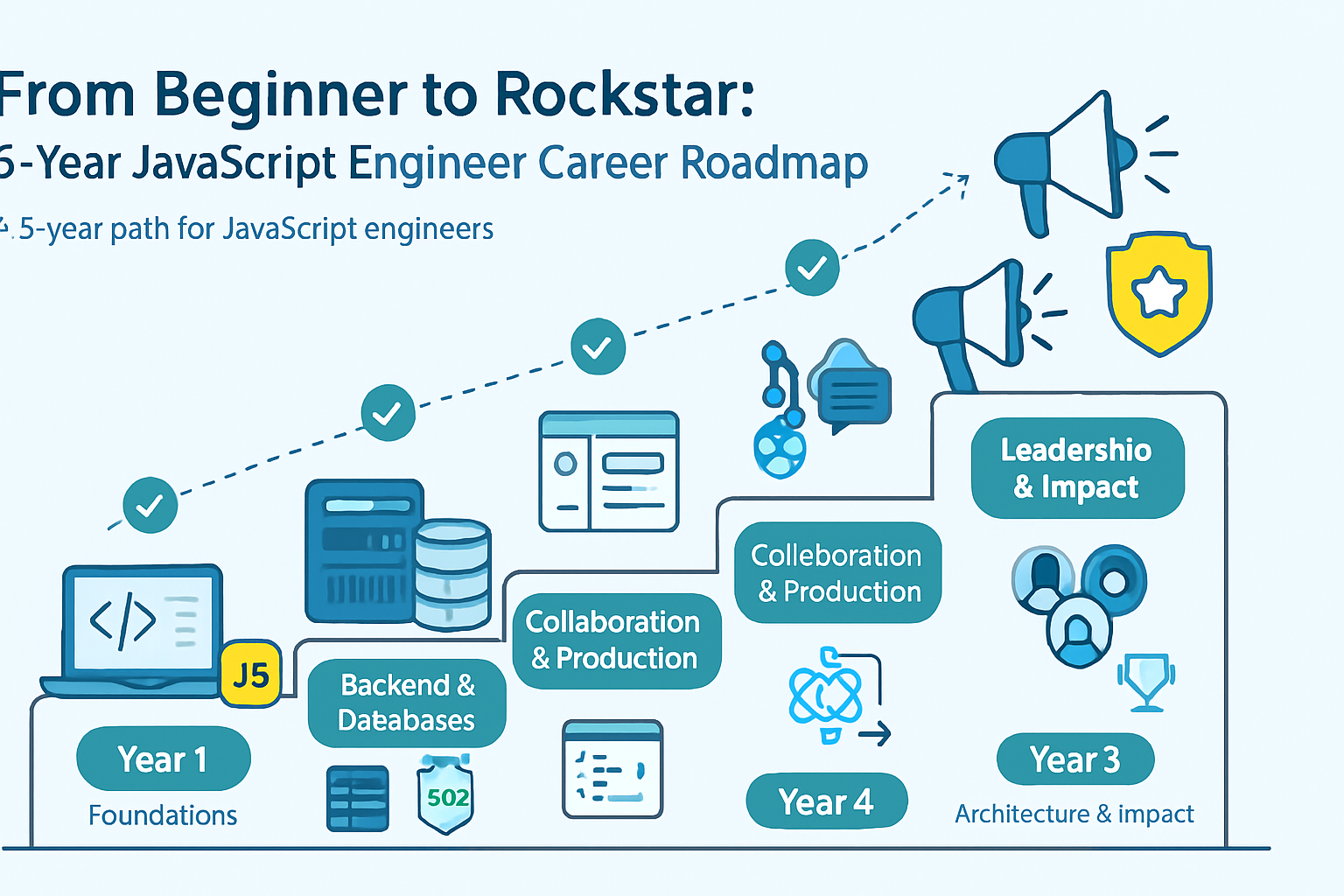· career · 6 min read
The Future of JavaScript: Salary Trends for 2025
A data-informed look at how JavaScript developer compensation is likely to change in 2025 - projected salary ranges, the technologies that will push pay higher, geographic effects, and practical steps engineers can take to capture the upside.

Introduction
The market for JavaScript talent continues to evolve rapidly. By mid‑2024 we already saw strong demand for engineers who combine modern JS frameworks with TypeScript, cloud and edge experience, and knowledge of performance and security. This article synthesizes salary data available through mid‑2024, projects plausible salary outcomes for 2025, explains the main drivers behind expected changes, and gives concrete advice for developers who want to increase their earning power.
Data, assumptions and methodology
- Sources used (data through mid‑2024): the Stack Overflow Developer Survey 2024, GitHub Octoverse reporting, industry salary aggregators (Glassdoor, Indeed, Dice), Hired salary reports, and Bureau of Labor Statistics pages for software developer roles.
- Approach: we establish typical 2023–mid‑2024 baselines, then extrapolate realistic 2025 scenarios using recent growth rates and known demand shifts. Projections are intentionally given as ranges and scenarios (conservative, baseline, high‑demand) because macroeconomics, hiring freezes or surges, and regional variation can sway outcomes.
Quick takeaways (TL;DR)
- Most JavaScript engineers should expect modest to solid salary growth in 2025: baseline increases of roughly 3–8% year‑over‑year in many markets.
- Specialists who combine JS skills with TypeScript + cloud/edge, AI integration, WebAssembly, or platform/infra expertise may see premium growth of 10–25% depending on geography and role.
- Remote and fully distributed companies will keep compressing geographic pay gaps at the mid to senior levels but top companies and hot startups will continue to pay material location premiums.
Baseline salary context (mid‑2024)
- U.S.: broad ranges for JS-centric roles (mid‑2024 data):
- Europe: generally 25–50% lower nominal salaries compared to the U.S., with wide variance by country (Nordics, Switzerland higher; Eastern Europe lower).
- India & APAC: much lower nominal figures but growing quickly in local-currency terms as startups mature and remote hiring increases.
2025 projections (scenarios)
Note: these are projections using mid‑2024 benchmarks and plausible demand trajectories.
Scenario A - Conservative (soft hiring market / macro slowdown)
- U.S.: +1% to +4% median change. Many roles flat to modestly up.
- Europe: flat to +3%.
- India/APAC: +3% to +7% local growth.
Scenario B - Baseline (continuation of 2023–2024 trends)
- U.S.: +3% to +8% (mid‑level front‑end $95k–$140k; senior $150k–$225k). Remote hiring moderates location premium but top company roles remain well above median.
- Europe: +2% to +6%.
- India/APAC: +5% to +10%.
Scenario C - High‑demand (tech rebound, AI + web/edge adoption accelerates)
- U.S.: +8% to +20% for roles with the right specialization. Example: a senior JS engineer who leads AI‑integrated frontend features or builds WebAssembly components could move into the $180k–$250k band at top companies or well‑funded startups.
- Europe/Global: meaningful uplifts for remote‑friendly companies competing for top JS talent.
Drivers of salary movement in 2025
- TypeScript and tooling maturity
- TypeScript adoption remains a major determinant of value. Employers increasingly expect codebases to be typed, and TypeScript competence shortens onboarding and reduces bugs - a direct productivity justification for higher pay. See language trends in the Stack Overflow Developer Survey 2024.
- Frameworks and meta‑frameworks
- React + Next.js remain high demand, but frameworks like Svelte, Solid and server‑rendered frameworks are gaining attention for performance and DX. Deep expertise in one or more modern frameworks (and in SSR/SSG) commands higher compensation.
- Server, edge, and runtime diversification (Node, Deno, Bun)
- Employers pay premiums for engineers who can build and operate Node.js apps at scale, optimize cold starts on serverless, or adopt new runtimes (Bun/Deno) where performance/value is proven.
- WebAssembly (Wasm) and Rust interop
- Teams building computation‑intensive frontends or embedding native modules increasingly use Wasm; JavaScript engineers who can architect Wasm interop and optimize pipelines will be rare and thus better compensated.
- AI/ML features in UX
- Adding on‑device inference, large‑model integration, or AI‑assisted authoring flows are becoming product differentiators. Frontend engineers who can embed and secure AI features (and reason about latency, cost, and UX) will be in higher demand.
- Cloud & infra knowledge
- Experience with cloud providers, edge platforms (Vercel, Cloudflare), GraphQL/federation, observability and performance profiling moves developers from “implementer” to “platform builder” - and into higher pay bands.
- Security and privacy
- Knowledge of secure client‑side patterns, supply‑chain security, and privacy engineering is increasingly valued.
Role‑specific expectations
- Frontend specialists: growth will track experience with modern UX frameworks, TypeScript, accessibility and performance. Senior frontend engineers who own delivery across web, mobile web and PWAs see the best gains.
- Full‑stack engineers: demand remains high. Those who combine React + Node + Cloud + infra automation are especially valuable.
- Platform/SRE engineers with JS/TS experience: higher pay if they own developer experience, CI/CD and observability.
- Embedded/desktop/web hybrid engineers (Electron, Tauri, Wasm): niche but increasingly valuable for cross‑platform product companies.
Geography, remote work and the compression effect
- Remote hiring continues to normalize. Some companies adopt fully location‑based compensation, others use geographic bands. For many mid‑level roles, remote work compresses regional differences; for senior roles and leadership the top companies still pay global premiums.
- Cities with strong tech clusters (SF, NYC, London, Berlin, Amsterdam) will continue to command above‑median pay, but remote roles allow candidates to extract better offers from nonlocal employers.
How to capture the upside (skills and actions that move pay)
- Deepen TypeScript mastery
- Beyond types: design patterns, advanced generics, typing libraries, and migration strategies.
- Pair JS with cloud/edge experience
- Learn serverless patterns, CDN/Edge functions, deployment pipelines, and cost/latency tradeoffs on Vercel, Cloudflare Workers, AWS Lambda@Edge.
- Add AI/ML feature integration skills
- Practical skills: using model APIs safely, vector stores, on‑device inference, latency/cost optimization, prompt engineering for product features.
- Learn WebAssembly basics and integration patterns
- Be able to evaluate when to move high‑cost computations to Wasm modules and manage JS/Wasm bridges.
- Improve system design and cross‑team communication
- Lead design reviews, own cross‑team integrations, and show impact in product metrics.
- Build an outcomes‑focused portfolio
- Public contributions, case studies (before/after metrics), and product demos make the value proposition tangible in interviews.
- Negotiate and package compensation smartly
- Consider total compensation (base, equity, bonus, benefits) and use market data to back requests. If possible, ask for performance‑based reviews at 6 months instead of waiting a year.
Negotiation script (concise)
Thanks - I'm excited about the opportunity. Based on market data for senior JavaScript/TypeScript engineers in this geography, and given my experience delivering X, Y, and Z (include measurable outcomes), I'm seeking a base salary of $XXXk with an equity package that reflects the long‑term impact I will drive. I'm flexible on structure but would like to align on a total comp that reflects my contributions.A few practical resources
- Stack Overflow Developer Survey: https://insights.stackoverflow.com/survey/2024
- Glassdoor / Indeed salary pages for role benchmarking: https://www.glassdoor.com, https://www.indeed.com
- Hired salary guides and market reports: https://hired.com/salary
- U.S. Bureau of Labor Statistics (software developer occupations): https://www.bls.gov/ooh/computer-and-information-technology/software-developers.htm
Risks and caveats
- Macro factors (recessions, funding slowdowns) can blunt salary growth; conversely, rapid reacceleration in tech hiring would push the high end up further.
- Salary projections vary greatly by company stage and region. Early‑stage startups may offer lower base but richer equity; FAANG/mega‑cap firms emphasize base + bonus + equity.
- Aggregated surveys mask outliers - an atypical skillset (Wasm + AI + infra) at a well‑funded startup can yield outsized offers that are not reflected in medians.
Conclusion
Expect steady growth for JavaScript engineers in 2025, with the biggest upside going to those who combine modern JS skills (TypeScript, frameworks) with cloud/edge, AI integration, performance/Wasm knowledge, and platform/infra experience. Use concrete, measurable examples of impact in interviews, keep skills current, and be deliberate about total‑comp negotiations to capture the market movement.
References
- Stack Overflow Developer Survey 2024: https://insights.stackoverflow.com/survey/2024
- GitHub / Octoverse reporting and trend posts: https://github.blog
- Bureau of Labor Statistics - Software Developers: https://www.bls.gov/ooh/computer-and-information-technology/software-developers.htm
- Glassdoor salaries (javascript developer): https://www.glassdoor.com/Salaries/javascript-developer-salary-SRCH_KO0,20.htm
- Hired - salary guides and insights: https://hired.com/salary
- Dice salary guides: https://www.dice.com/salary-guide



